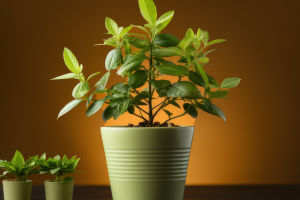Throughout human history, roads have played a crucial role in connecting different regions, cultures, and peoples.
With modern societal development, roads are no longer merely conduits for transportation; they have also become symbols of the harmonious coexistence of art and nature.
Roads winding through green fields resemble lifelines, intertwining the beauty of nature with human ingenuity, creating breathtaking landscapes.
The Art of Roads
The design of roads is an art. From initial path planning to final construction, every detail reflects the designer's craftsmanship. The artistry of roads is first evident in their forms.
Winding mountain roads, straight highways, and gracefully flowing forest paths each harmonize with their surrounding natural environment, creating a unique aesthetic. For instance, Italy's Amalfi Coast Road, with its winding route, perfectly blends with the azure Mediterranean Sea and cliffs, making it one of the world's most famous scenic routes.
Moreover, the materials and colors of roads play a significant role in artistic expression. Different materials, such as asphalt, concrete, and stone slabs, not only serve various functional purposes but also enhance the integration with the natural environment through texture and color variations. In some forest parks, designers use natural stone to pave paths, making the roads seem like a part of nature, thus enhancing visitors' sense of closeness to the environment.
Harmony Between Nature and Roads
Achieving harmony between roads and nature is a key goal of modern landscape design. A successful road design must not only fulfill transportation functions but also respect and protect the natural environment. Designers employ various innovative methods to achieve this goal.
First, ecological protection is crucial. When planning roads, efforts are made to avoid habitats of rare plants and animals, minimizing disruption to ecosystems. For example, during highway construction, animal passages are designed to allow wildlife to safely cross roads, reducing traffic accidents. Switzerland's A1 highway incorporates several animal passages, providing safe migration paths for animals and effectively protecting the local ecosystem.
Second, landscape integration is essential. Road designs should blend into natural landscapes rather than disrupt them. Through clever route planning, roads become part of the scenery. For example, when constructing roads in tourist areas, natural terrain and vegetation are utilized to hide the roads among trees and mountains, ensuring that the roads serve their function without spoiling the natural beauty.
Application of Modern Technology
With technological advancements, modern road design incorporates many cutting-edge technologies, making roads more environmentally friendly and intelligent. For example, solar power technology is used to install solar-powered streetlights along roads, conserving energy and reducing environmental pollution.
The Netherlands' SolaRoad project is a typical example, where solar panels are embedded in the road surface to absorb solar energy during the day and provide lighting at night, achieving energy self-sufficiency.
Intelligent transportation systems are also a vital component of modern road design. By installing smart monitoring devices and sensors, real-time traffic conditions can be monitored, traffic signals adjusted promptly to reduce congestion, and road efficiency improved. These devices also monitor road usage and environmental data, providing a scientific basis for road maintenance and environmental protection.
Resonance Between Humanity and Nature
Roads are not just conduits for transportation; they are also embodiments of cultural exchange and human spirit. On roads through green fields, travelers not only appreciate the natural scenery but also feel the pulse of history and culture.
For example, the ancient Silk Road, connecting the East and West, carried bustling trade activities and witnessed exchanges and fusion of different civilizations. Today, walking on these ancient roads, we can still sense the cultural resonance that transcends time and space.
In modern society, many roads have become places for leisure and exercise. In city parks, people walk, jog, and cycle along forest paths, enjoying the joy of exercise and closeness to nature. Such road designs meet people's recreational needs and promote physical and mental health, providing a tranquil oasis amid busy lives.
Conclusion
Roads through green fields are not just connectors between cities and the countryside; they symbolize the harmonious coexistence of art and nature. Through meticulous design and scientific planning, we can meet transportation needs while protecting the natural environment and enhancing people's quality of life.
Let us work together to make the journey towards the future more beautiful and harmonious.


